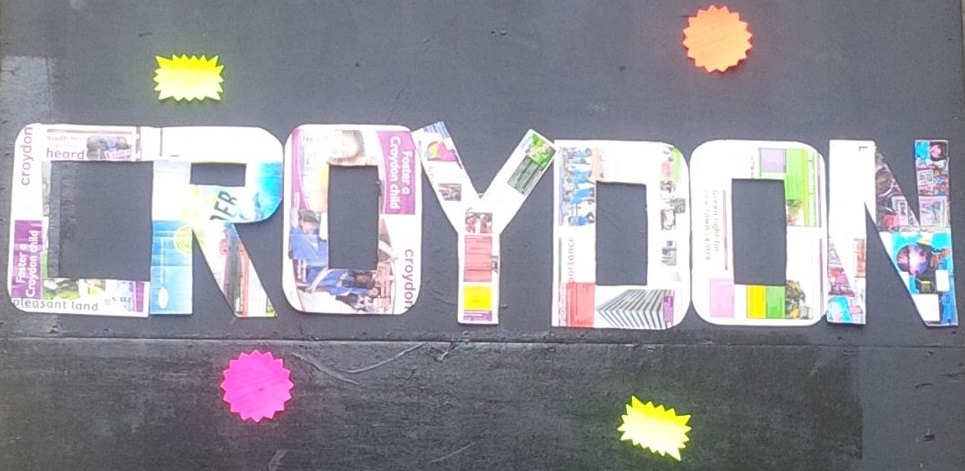Seven days after Westfield and Hammerson were given the green light for their £1.4bn transformation of Croydon town centre, the Conservative-led Croydon Council administration of the day proclaimed that ‘Croydon is on the crest of a regeneration wave’. They failed to mention the final destination of said voyage: the promised land of gentrification, with a shiny new Westfield shopping centre ready to meet retail enthusiasts when they arrive there in 2020.
Some will benefit from this much-hyped journey to the promised land and subsequent transformation of Croydon which, ironically, began after the destruction of lives and livelihoods caused by the 2011 riots. For purists, the final destination impairs the raison d’être of regeneration which, among the widespread definitions espoused by experts, has this at its core: the reversal of economic, social and physical decline in areas.
The chattering classes in Croydon are keen to sell a Reagan-esque theory of trickle down economics, adamant that the economic benefits will spread far and wide from the town centre. If we look to the neighbouring borough of Lambeth, Brixton in particular, or the Heygate Estate in Southwark, one can see that this so-called trickle down theory serves as a justification for developers and well-connected individuals to eat the fat of the land. Meantime regular folk make do with off-cuts and dripping, for which they are told they should be grateful, whilst being displaced from the aforementioned land.
Change is inevitable, so regular folk just have to deal with it, right? People who cannot accept change have no option other than to watch change happen around them and, in time, either be consumed by it or extract themselves from the situation. In the end it makes no odds: change affects them whether they like it or not.
This sense of powerlessness is diametrically opposed to what I believe: people have the power to organise, build coalitions with like-minded individuals, make their voices count and create new possibilities.
Organisations like Citizens UK have been successful with this formula and their tally sheet of bringing about change includes the introduction of the Living Wage, which was adopted by Labour-run Croydon Council in 2015. In March 2015 local citizens, with the support of Croydon Conservatives, used their influence to force the Council to u-turn on their decision to close Purley Pool. Croydon resident Ally Mckinlay was able to galvanise locals to support his vision and raise money to reawaken Croydon’s historical association with the growth of saffron.
However, this fundamental belief in the ability of people to affect change, create something new or solve problems in their community crashes into an impenetrable wave when it comes to gentrification: the course which Croydon is taking to reach its promised land is set and cannot be altered.
The full impact of gentrification in Croydon is an elephant in the room. Anything other than bowing one’s head in gratitude at the altar of Westfield and Hammerson is tantamount to treason. There is even a group that would have you believe that gentrification in Croydon is a fallacy, whilst acting as cheerleaders for the very things that act as social markers of gentrification and sweeping Croydon’s social-ills under the carpet in favour of creating a new narrative.
As one who lives and has a vested interest in Croydon, I do not begrudge that my town should seek to improve what it has to offer, making it more appealing for residents, workers and newcomers alike. As a foodie, I enjoy visiting Boxpark. However, I acknowledge the elephant in the room: Croydon is riding on the crest of a wave to gentrification and many of the people who call themselves Croydonians today, and have done so for an age, will find themselves and their children unable to benefit from the changes that are taking place around them. Despite Croydon Labour’s manifesto pledge that any new developments should consist of 30% affordable housing, it is a prospect that is still unaffordable for many people.
The so-called affordable homes that Croydon Council leveraged from their deal with developers could cost 80% of market value. The ‘Croydon jobs for Croydon residents’ ethos that the Council is keen to assign to the estimated 5,000 jobs as a result of the Westfield Hammerson development is unenforceable.
One only needs to look at Brixton in the neighbouring borough of Lambeth to see that gentrification necessitates the gradual demise of long-term residents, many of them from Black and Minority Ethnic backgrounds, to other locations. It’s even affected the price and availability of plantain, with traders around Brixton market starting to fade away.
One of Croydon’s selling points is that it is culturally dynamic, but the truth is that cultural diversity is one of the first things to disappear when developers start to work up their plans for an area. This won’t happen overnight but, gradually, the centre of Croydon will change not only its look, but the demographic makeup of its inhabitants. This is something that Labour-run Croydon Council and Gavin Barwell MP never speak of. Instead our politicians act as sea marshals as Croydon continues on its set course.
In years to come politicians will no doubt hail the success of regeneration, wanting to make sure the voting public know they were responsible for the shiny new shopping centre, smart unaffordable homes and the hip reviews that Croydon is en vogue and the go-to destination to live, work and socialise. However, how many of these politicians will tell you they considered or cared about the impact of gentrification?
In this era of being ‘woke’, let’s be wise to the reality of what regeneration means for Croydon: gentrification by stealth.
